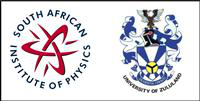Speaker
Abstract content <br> (Max 300 words)
Nitrilase superfamily amidases are thiol enzymes that catalyze the conversion of amides to their corresponding acids and ammonia. A conserved Cys, Glu and Lys (CEK) catalytic triad has been identified in these enzymes, and catalysis shown to follow a ‘ping pong bi bi’ mechanism in which the substrate forms a thioester with the catalytic cysteine. A ‘second’, structurally conserved active site glutamate has been found to be essential for activity in amidases, but its role in catalysis has never been elucidated. This study was aimed at understanding the role of catalytic residues in amidases.
The four catalytic residues (C165, E61, E139 and K131) were mutated individually in the model amidase from Nesterenkonia species (NitN). The mutants were reacted with a range of short aliphatic amide substrates and the resultant proteins characterized by mass spectrometry and X-ray crystallography.
Mutation of the two catalytic glutamates and the lysine resulted in unstable mutants that were inactive, highlighting the importance of these residues in maintaining the protein fold and for enzymatic activity. Mass spectrometry showed that thioester acyl-enzyme intermediates could be trapped by mutating E61. In addition, incubation of the glutamate mutants with amide substrates resulted in two types of unexpected reactions: An SN2 substitution reaction leading to the displacement of the fluorine in fluoroacetamide was observed with the E61Q/L mutants, while Michael addition of acrylamide at the catalytic cysteine was observed with the mutants of both glutamate residues (E61Q/L and E139Q). These artifactual reactions not only emphasize the role that the two glutamates play in positioning the substrates but also demonstrate that E61 is not always necessary to catalyze nucleophilic attack by the cysteine. Mutation of K131 to a glutamine resulted in covalently modified protein that had a possible adipamide thioester intermediate trapped in the active site, suggesting a component of general acid catalysis. These results support a Cys, Glu, Glu and Lys (CEEK) catalytic tetrad in which the two glutamates and the lysine function as a modular assembly.
Apply to be<br> considered for a student <br> award (Yes / No)?
No
Would you like to <br> submit a short paper <br> for the Conference <br> Proceedings (Yes / No)?
No
Main supervisor (name and email)<br>and his / her institution
Trevor Sewell (Trevor.Sewell@uct.ac.za)
University of Cape Town

